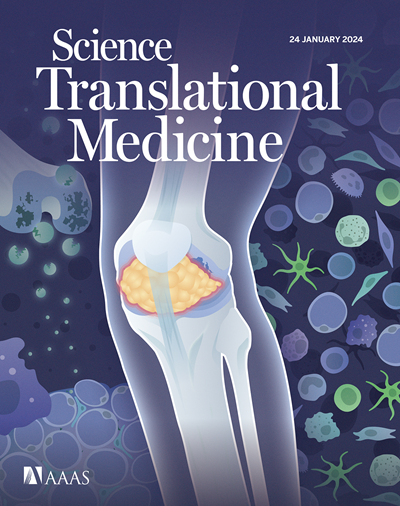Proteogenomic characterization reveals that lipid droplet formation promotes esophageal squamous cell cancer progression
IF 15.8
1区 医学
Q1 CELL BIOLOGY
引用次数: 0
Abstract
Esophageal cancer is one of the most common cancers and a leading cause of cancer-related mortality in the world. Here, we have performed comprehensive characterization of genetic, transcriptomic, proteomic, and phosphoproteomic features in 293 patients with esophageal squamous cell carcinoma (ESCC). Chromosome 12q13.13 amplification was correlated with the up-regulation of Janus kinase–signal transducer and activator of transcription pathway and keratins at the protein level in ESCC tissues and associated with poor prognosis in patients with well-differentiated and moderately differentiated ESCC tumors. Patients with poorly differentiated ESCC tumors had infiltration of activated T cells in the tumor microenvironment, suggesting their potential responsiveness to immunotherapy. Chromosome 8q amplification was associated with lymph node metastasis in ESCC tissues, characterized by a switch from noncanonical to canonical WNT signaling. Proteomic classification revealed that the subgroup with the worst prognosis had chromosome 2p amplification and up-regulated lipid metabolism in ESCC tissues at the protein level. Lipid droplet formation induced by perilipin-2 and apolipoprotein E promoted cytokine secretion, which, in turn, recruited T cells and enhanced stromalization, thereby suppressing T cell activation and promoting malignant ESCC progression. This study provides a resource for understanding the development of ESCC and identifying potential therapeutic targets for testing.
蛋白质基因组学特征揭示脂滴形成促进食管鳞状细胞癌的进展
食管癌是世界上最常见的癌症之一,也是癌症相关死亡率的主要原因。在这里,我们对293例食管鳞状细胞癌(ESCC)患者的遗传、转录、蛋白质组学和磷蛋白质组学特征进行了全面的表征。染色体12q13.13扩增与ESCC组织中Janus激酶信号转导及转录途径激活因子及角蛋白蛋白水平上调相关,与高分化和中分化ESCC肿瘤患者预后不良相关。低分化ESCC肿瘤患者在肿瘤微环境中浸润活化T细胞,提示其对免疫治疗的潜在反应性。染色体8q扩增与ESCC组织的淋巴结转移有关,其特征是WNT信号从非规范到规范的转换。蛋白质组学分类结果显示,预后最差的亚组在ESCC组织中存在2p染色体扩增和蛋白水平上的脂质代谢上调。perilipin-2和载脂蛋白E诱导脂滴形成,促进细胞因子分泌,进而募集T细胞,增强间质化,从而抑制T细胞活化,促进恶性ESCC进展。本研究为了解ESCC的发展和确定潜在的治疗靶点提供了资源。
本文章由计算机程序翻译,如有差异,请以英文原文为准。
求助全文
约1分钟内获得全文
求助全文
来源期刊

Science Translational Medicine
CELL BIOLOGY-MEDICINE, RESEARCH & EXPERIMENTAL
CiteScore
26.70
自引率
1.20%
发文量
309
审稿时长
1.7 months
期刊介绍:
Science Translational Medicine is an online journal that focuses on publishing research at the intersection of science, engineering, and medicine. The goal of the journal is to promote human health by providing a platform for researchers from various disciplines to communicate their latest advancements in biomedical, translational, and clinical research.
The journal aims to address the slow translation of scientific knowledge into effective treatments and health measures. It publishes articles that fill the knowledge gaps between preclinical research and medical applications, with a focus on accelerating the translation of knowledge into new ways of preventing, diagnosing, and treating human diseases.
The scope of Science Translational Medicine includes various areas such as cardiovascular disease, immunology/vaccines, metabolism/diabetes/obesity, neuroscience/neurology/psychiatry, cancer, infectious diseases, policy, behavior, bioengineering, chemical genomics/drug discovery, imaging, applied physical sciences, medical nanotechnology, drug delivery, biomarkers, gene therapy/regenerative medicine, toxicology and pharmacokinetics, data mining, cell culture, animal and human studies, medical informatics, and other interdisciplinary approaches to medicine.
The target audience of the journal includes researchers and management in academia, government, and the biotechnology and pharmaceutical industries. It is also relevant to physician scientists, regulators, policy makers, investors, business developers, and funding agencies.
 求助内容:
求助内容: 应助结果提醒方式:
应助结果提醒方式:


